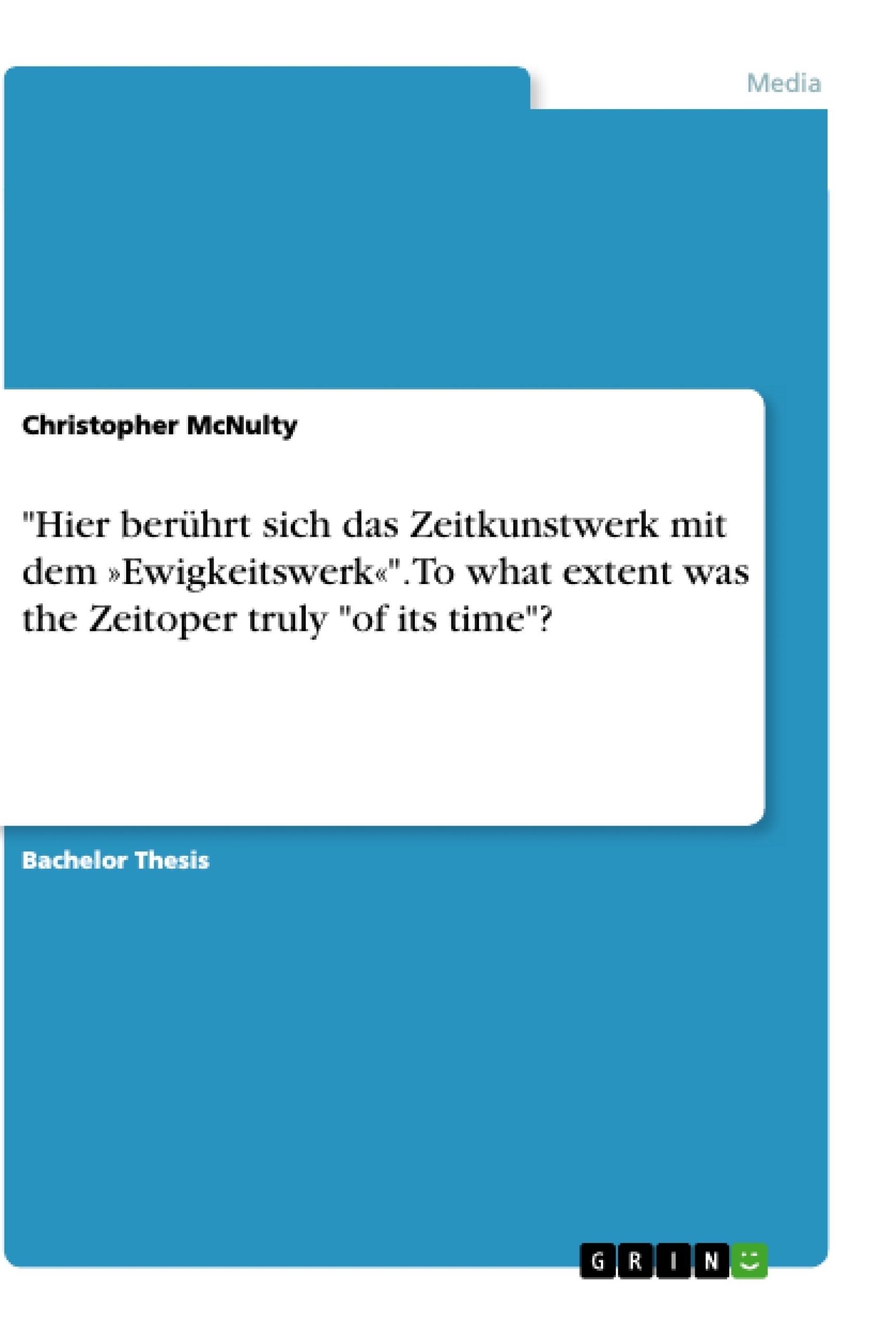Recent scholarly discourse on the so-called Zeitopern of the Weimar Republic has tended to focus on the novelty of these works: their obsession with technology, the prevailing political climate or jazz idioms, for example. Indeed, very few academics have examined the operas’ close links to music and opera of the past (especially Wagner, who apparently stands in direct opposition) and to contemporaneous, non-‘Zeit-’ music drama. To what extent, then, were these pieces ‘of their time’? Investigating these issues, as well as the disparity between the works’ ambition for mass appeal on the one hand and their swift departure from the repertoire (unprecedented for works of such initial popularity) on the other, the Zeitoper’s apparently most fundamental defining quality – ephemerality – will be brought into question in an approach novel for its broader outlook and thoroughness.
Inhaltsverzeichnis (Table of Contents)
- Demythologising the Zeitoper
- The Zeitoper: A Brief History
- Cook's “Opera for a New Republic”
- Taylor-Jay's “The artist-operas of Pfitzner, Krenek and Hindemith”
- The "New" Music of the Zeitoper
Zielsetzung und Themenschwerpunkte (Objectives and Key Themes)
This dissertation aims to provide a comprehensive re-evaluation of the Zeitoper, a genre of opera that emerged in the Weimar Republic. The study critically examines the works' historical context, musical features, and broader cultural significance. It seeks to challenge prevailing interpretations and offer a more nuanced understanding of the Zeitoper's true nature.
- The historical context of the Zeitoper
- The relationship between the Zeitoper and other operatic traditions
- The role of technology and modernity in the Zeitoper
- The reception and influence of the Zeitoper
Zusammenfassung der Kapitel (Chapter Summaries)
The dissertation explores various aspects of the Zeitoper, critically analyzing existing scholarship and offering fresh perspectives. The chapters delve into the historical context of the Zeitoper, its relationship to other operatic traditions, and its musical and theatrical elements.
- The first chapter critiques existing scholarship on the Zeitoper, particularly Susan C. Cook's influential study "Opera for a New Republic." It highlights the limitations and inaccuracies of Cook's approach and argues for a more nuanced understanding of the Zeitoper.
- The second chapter examines Claire Taylor-Jay's analysis of the "artist-operas" by Krenek, Hindemith, and Pfitzner, offering a comparative perspective and discussing the broader context of these works.
- The third chapter delves into the musical features of the Zeitoper, analyzing the influence of jazz and other contemporary musical styles. It explores the role of technology and modernity in shaping the musical language of the Zeitoper.
- The fourth chapter examines the reception and influence of the Zeitoper, exploring its place within the broader landscape of Weimar cultural life. It investigates the relationship between the Zeitoper and the artistic and political climate of the time.
Schlüsselwörter (Keywords)
This dissertation focuses on the Zeitoper, exploring its historical context, musical features, and reception. Key concepts include the Weimar Republic, operatic traditions, musical modernity, jazz influence, and the relationship between art and society. The study examines the works of composers such as Krenek, Weill, and Hindemith, analyzing their individual contributions to the Zeitoper genre.
- Quote paper
- Christopher McNulty (Author), 2008, "Hier berührt sich das Zeitkunstwerk mit dem »Ewigkeitswerk«". To what extent was the Zeitoper truly "of its time"?, Munich, GRIN Verlag, https://www.grin.com/document/272931



